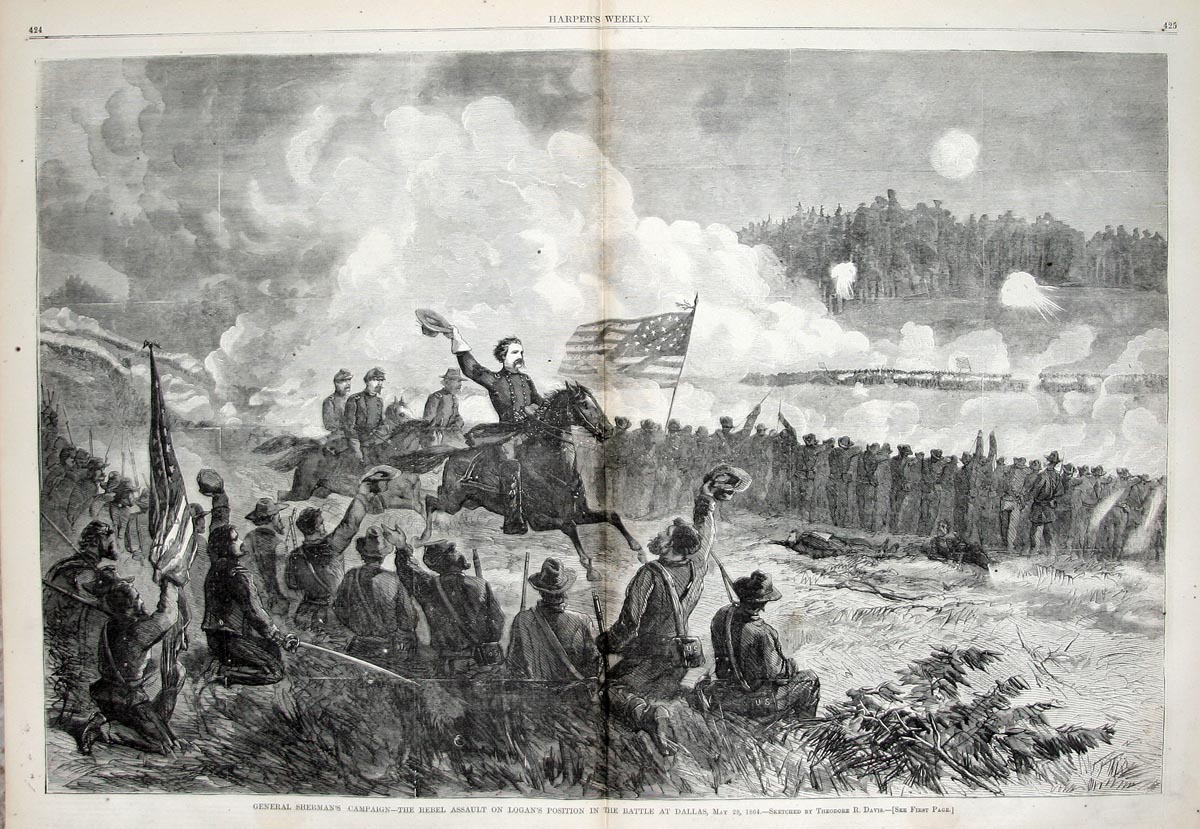
Most of Custer's battalion died in, approximately, company formation, in a long skirmish line along the ridge. There is some intermingling as one would expect as a position collapsed, but the location of the bodies does not suggest panicked flight. The greatest degree of intermingling is on the highest elevation, which we know as Last Stand Hill. This makes sense; Custer would have headed for the high ground as things went south, and survivors of other companies would have tried to reach the last group of fighters as their positions were overrun. Custer's body was found on the high ground, although it is often suggested that he may have been killed or severely wounded earlier, down on the ford. We don't really know when or where Custer was hit, and this point still draws conjecture because it is relevant to the conduct of the 7th Cavalry's battle.
The Indian description of panicked flight may be a reference to the Reno fight. Reno had crossed the river with three companies and hit one end of the village while Custer's column moved along the ridge on the far bank. Reno quickly discovered that he had kicked a hornets nest and was fighting the whole Sioux nation, while Custer's men were nowhere to be seen. Reno gave the order to withdraw to the cottonwoods along the river, though in fairness it seems that every man in his command had reached the same conclusion independently; they were running for their lives from a hopeless skirmish line in the open ground back to the cover of the trees. The survivors regrouped in the woods and fell back across the river to a convenient bluff, where they were soon joined by Captain Benteen and his command. This half of the regiment held out until relieved when the Terry-Gibbon column arrived
The subject of cavalry troopers shooting themselves sometimes comes up. Some of them probably did. The Indians routinely practiced torture, and they were good at it. Some gruesome samples were found on the battlefield, including dismembered remains of some men -- three if memory serves --who were unfortunately enough to have lived long enough to be taken back to the village. The principle of saving the last bullet for yourself is found in many armies with experience of fighting natives who liked to finish enemies slowly. As Kipling put it, "When you're wounded and left on Afghanistan's plains …."
There is one Indian account of a trooper who, the Indians said, tried to ride for it. If the Indian accounts are correct, this man had actually outdistanced his pursuers and looked to have gotten away when he suddenly pulled up, took out his revolver, and shot himself. The battlefield was searched, however, and no remains consistent with this account have ever been found. If this man got a couple of miles away before shooting himself, his body may have been missed, but we just don't know. It's one of the remaining mysteries of the Custer fight.


Reno had ordered his detachment to dismount after he crossed the river, instead of charging hellbent into the Indian encampment. He turned his cavalry into badly outnumbered infantry, which got torn to pieces once the Indians counterattacked.